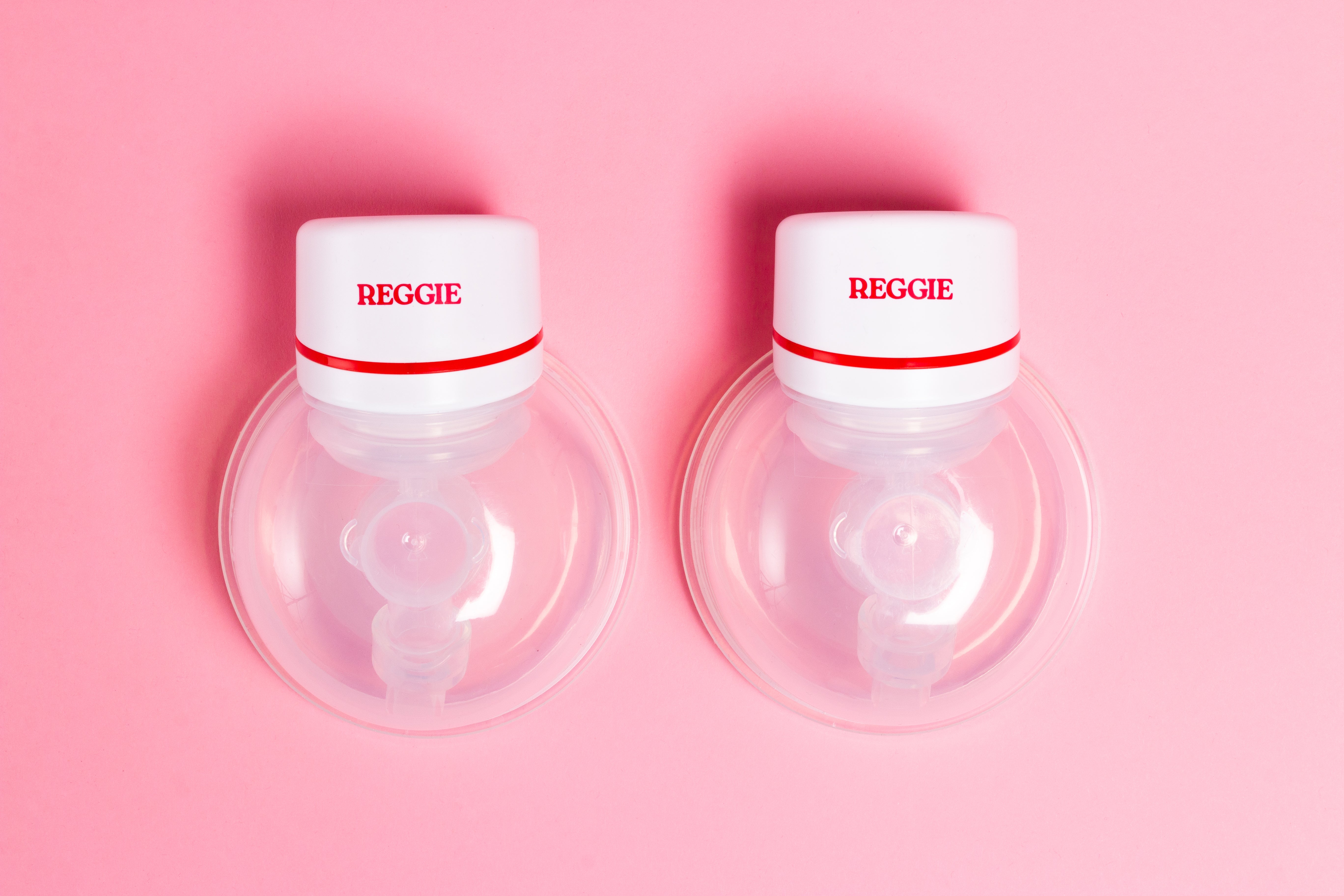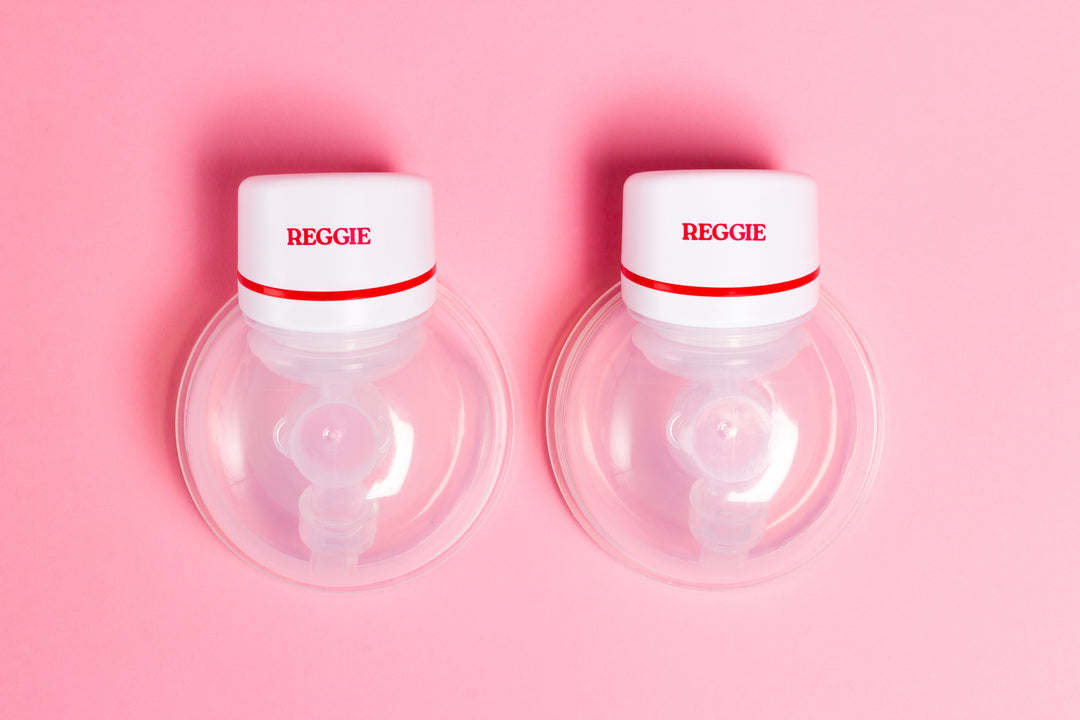5 Reasons Wearable Pumps Lose Milk Flow
Wearable breast pumps are convenient but can sometimes reduce milk flow. This is often due to issues like poor fit, weak suction, blocked parts, user mistakes, or even physical and mental factors. Understanding these problems and how to fix them can help maintain a steady milk supply.
Quick Overview:
- Wrong Pump Fit: Poor flange size affects suction and comfort.
- Weak Suction: Loose or worn parts can weaken vacuum strength.
- Blocked Parts: Milk residue in flanges, valves, or tubing disrupts flow.
- User Mistakes: Misaligned parts or incorrect positioning reduce efficiency.
- Physical & Mental Factors: Dehydration, fatigue, and stress can slow letdown.
By addressing these issues, you can improve milk flow and make pumping more effective. Regular maintenance, proper setup, and self-care are key to success.
1. Wrong Pump Fit
Getting the right pump fit is crucial for effective milk expression. If the pump doesn't fit well, it won't create the proper vacuum seal around your nipple. This can lead to poor milk expression and lower output, similar to other factors that can impact milk flow.
Signs Your Pump Doesn't Fit
A bad fit often shows up as physical discomfort, like nipple pain or pinching, or milk leaking from the flanges. If you're pumping regularly but still getting low milk output, the fit of your pump might be the problem.
How to Find the Right Fit
Finding the right fit isn’t about bra size - it’s about measuring the diameter of your relaxed nipple. This helps you pick a flange that allows your nipple to move freely in the tunnel without too much friction.
| Problem | Fix | What to Expect |
|---|---|---|
| Flange too small | Use a larger flange or insert adapters | Less nipple compression and better milk flow |
| Flange too large | Switch to a smaller flange or try cushion inserts | Improved suction and more efficient milk removal |
| Uneven suction | Adjust the seal and positioning | Consistent milk expression from both breasts |
Brands like Reggie Baby offer flange inserts and breast shields to help when standard sizes don’t work.
Keep in mind, your fit might change over time. Reassess every few weeks, especially if you notice discomfort or a drop in milk output, to ensure your pump continues to work effectively.
2. Weak Suction
Wearable breast pumps often experience weaker suction, which can slow milk flow. These pumps typically produce 10–20% less output compared to traditional models due to their compact design.
Why Suction Weakens
Several issues can reduce suction power in your pump:
| Issue | Impact | Warning Signs |
|---|---|---|
| Loose Components | Breaks the vacuum seal | Audible air leaks, inconsistent suction |
| Worn Parts | Lowers suction efficiency | Reduced milk output, unusual noises |
| Incorrect Assembly | Disrupts proper vacuum | Milk backflow, poor expression |
| Kinked Tubing | Blocks airflow | Intermittent suction, reduced output |
The valve system plays a key role in maintaining suction. Damaged or worn valves can’t create the vacuum needed for effective milk expression. Regularly checking these parts is crucial for keeping your pump working efficiently.
Fixing Suction Problems
To improve suction and milk flow, inspect all connections. Even small gaps can weaken suction. Ensuring a complete seal at all connection points is vital.
- Thoroughly clean all parts after every use.
- Replace valves and membranes when they show signs of wear.
- Check for worn components before each session.
- Align all parts correctly during assembly.
If you’re using a Reggie Baby pump or a similar wearable model, adjust the suction settings. Start low and gradually increase until you find a comfortable level. Keep in mind that higher suction doesn’t always mean better results - too much pressure can actually reduce milk flow.
To make your sessions more productive, begin pumping in a quiet space to encourage letdown before moving around. This helps establish proper suction and can boost milk output. If suction problems persist, try alternating between your wearable pump and a traditional one to maintain your milk supply.
Once suction is optimised, you can move on to checking for blockages in the next step.
3. Blocked Parts
Blocked pump components can disrupt milk flow and reduce output. Knowing how to spot and fix these issues is key to keeping your pump working smoothly.
Finding Blockages
Check your pump parts regularly to catch blockages early. Here are some common signs to look out for:
| Component | Signs of Blockage | Effect on Pumping |
|---|---|---|
| Flanges | Milk residue on surfaces | Poor suction, discomfort |
| Valves | White film or stiffness | Uneven milk flow, weak suction |
| Tubes | Condensation or milk spots | Lower efficiency, motor strain |
Pay close attention to connection points where milk tends to build up. If you notice a drop in milk output along with strange pump noises, it’s likely time to clean or replace blocked parts.
Maintenance Steps
Proper upkeep is the best way to avoid blockages and keep your pump running well. After each use, take apart all parts that come into contact with milk and clean them thoroughly.
Here’s a simple cleaning routine:
- Rinse all parts with cool water immediately after use to prevent milk residue from sticking.
- Wash with warm, soapy water, focusing on crevices and valve areas where milk can collect.
- Dry completely on a clean cloth or drying rack before reassembling to avoid moisture-related problems.
If parts show signs of wear or blockages that won’t go away, it’s time to replace them. Reggie Baby offers replacement components like flange inserts and breast shields made specifically for their wearable pumps, ensuring proper suction and reducing the risk of blockages.
Blocked pump parts can lead to more than just reduced milk flow - they might also cause breast issues like clogged ducts or mastitis. Regular cleaning and maintenance not only protect your pump’s performance but also your overall breast health.
Once your pump components are clean and functioning well, you can focus on avoiding user errors and improving efficiency.
sbb-itb-08733ff
4. User Mistakes
Even the best wearable pumps can fall short if they're not used correctly. Knowing the common mistakes can help you keep milk flow steady and avoid unnecessary frustration.
Most Common Errors
Two of the biggest culprits for reduced milk flow are poor assembly and incorrect positioning. If parts aren't properly connected, air leaks can mess with the vacuum seal, making it harder to express milk effectively.
Here are some key mistakes and their effects:
| Error Type | Impact on Milk Flow | Warning Signs |
|---|---|---|
| Incorrect Flange Size | Less milk, nipple irritation | Discomfort, pinching, low output |
| Poor Positioning | Incomplete drainage | Leakage, uneven milk expression |
| Loose Assembly | Weak suction | Loud noises, reduced suction |
| Improper Seal | Air leaks | Milk backing up, lower milk output |
Using the wrong flange size can make pumping inefficient and uncomfortable. Your nipple should move freely in the flange tunnel without pulling in too much areola tissue.
Correct Usage Tips
Getting the setup right is key. Start by creating a calm, relaxed environment - stress can interfere with your letdown reflex.
For better results:
- Centre alignment: Make sure your nipple is centred in the flange before you start. It should move without rubbing against the sides.
- Secure assembly: Double-check that all parts, especially valves and membranes, are firmly in place.
- Gradual suction: Begin with low suction and increase it gradually once milk starts flowing.
If your output suddenly drops, check these potential issues:
- Are the breast shields centred and sealed properly?
- Are all parts securely connected?
- Are the valves clean and correctly attached?
- Are the membranes intact and undamaged?
For users of wearable pumps like those from Reggie Baby, remember to reassess your pump's fit regularly. Changes in your body may require adjustments, and accessories like flange inserts can help maintain a good fit.
Taking a little extra time to set up correctly can make a big difference. While wearable pumps are great for mobility, proper positioning is still crucial for success.
Next, we'll look at how physical and mental factors can also affect milk flow.
5. Physical and Mental Factors
Your physical health and mental state are just as important as the technical aspects of pumping when it comes to maintaining milk flow.
Physical Health and Its Effects
Your body’s condition has a direct influence on milk production. For instance, being dehydrated can reduce milk supply by as much as 20%, so staying hydrated throughout the day is crucial.
Here are some common physical factors that can impact milk flow:
| Physical Factor | Impact on Milk Flow | Suggested Solution |
|---|---|---|
| Dehydration | Up to 20% reduction | Drink plenty of fluids regularly |
| Blocked Ducts | Reduced output | Use gentle massage and warm compresses |
| Poor Posture | Inefficient drainage | Maintain an upright, comfortable position |
| Fatigue | Slower letdown | Take frequent breaks and rest |
Sometimes, physical issues can resemble technical problems, like a poorly fitting flange or low suction. By paying close attention to how your body responds during pumping, you can better identify whether the issue is mechanical or physical.
Some quick tips for maintaining physical health while pumping:
- Drink water consistently throughout the day.
- Rest between sessions to avoid exhaustion.
- Sit in a comfortable, upright position while pumping.
- Regularly inspect your pumping accessories to ensure they’re comfortable and working properly.
The Role of Stress
Mental stress can disrupt the milk letdown reflex, making it harder for milk to flow. Stress interferes with the hormones that control milk production and release.
To reduce stress during pumping, try these strategies:
| Stress Management Technique | Benefits | How to Apply |
|---|---|---|
| Deep Breathing | Encourages relaxation | Take slow, deep breaths before and during pumping |
| Visualisation | Stimulates letdown reflex | Look at photos or videos of your baby while pumping |
| Light Exercise | Lowers cortisol levels | Do gentle stretches between sessions |
| Calm Environment | Reduces distractions | Create a quiet, soothing space for pumping |
Reducing stress can improve the same hormonal processes that are affected by pump fit and suction, helping you pump more efficiently. Tracking your stress levels alongside your pumping sessions may reveal patterns, allowing you to make adjustments for better results.
Solutions for Better Milk Flow
Wearable pumps might produce 10–20% less milk compared to traditional models, but focusing on proper equipment care and self-care can make a difference. Regularly cleaning your pump, checking its parts, staying hydrated, getting enough rest, and managing stress are all key to successful pumping.
Here’s how these factors play into your routine:
| Focus Area | Action Steps | What It Helps With |
|---|---|---|
| Equipment Care | Clean pump parts regularly and inspect for damage | Prevents blockages and keeps suction strong |
| Physical Wellness | Drink plenty of water, rest well, and maintain good posture | Supports steady milk production |
| Mental Health | Practice relaxation and stress management | Encourages a better letdown reflex |
| Technical Setup | Use the right flange size and ensure proper positioning | Improves milk extraction efficiency |
By combining proper equipment maintenance with thoughtful self-care, you can create a strong foundation for improving milk flow.
If you need more personalised guidance, consider consulting a certified lactation specialist. They can help you fine-tune pump settings, positioning, and maintenance routines.
For products that support these strategies, Reggie Baby offers wearable, wireless pumps with adjustable settings and multiple flange sizes, including a standard 24mm option. They also provide accessories like flange inserts ($12 AUD) and replacement valves ($10 AUD), designed to maintain suction and flow.
"Stronger suction can potentially damage the skin and even reduce milk flow", caution lactation experts, highlighting the importance of finding comfortable settings and the right fit.
With these tips and tools, you can make your pumping sessions more effective and comfortable.







Leave a comment